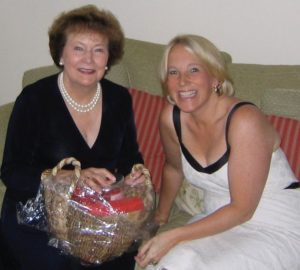“Caregiving often calls us to lean into love
we didn’t know possible.” Tia Walker, author
Think back on your life for a moment. When in your life did you have to dig deep into your reserves to face another day? For many of us, it is likely a time that required us to care for another person. It might be our children, our significant other or a parent.When it happens, it can be unexpected and challenge us to keep all of the balls in the air to meet our daily tasks of career, family… and life! It also can stretch us to our personal limits – physically, emotionally, mentally and spiritually.
AARP and the National Alliance for Caregiving suggest there are an estimated 34+ million Americans are currently providing unpaid caregiving to loved ones each day. AARP and the National Alliance for Caregiving suggest that the majority of family caregivers are women. They are usually caring for one loved one and are challenged by navigating the healthcare system, utilizing limited financial dollars and addressing both the physical and emotional aspects of their loved one’s illness.
Our Changing Society!
It is important to note that caregiving has changed throughout history. The American Society on Aging (ASA) recently published a review titled “Family Caregiving: Looking to the Future.” In the ASA’s review of caregiving, the researchers note that before World War II, advanced age was not common. “Only 41 percent of people born in 1900 survived to age 65. In sharp contrast, an estimated 84 percent of people born in 2010 will live to age 65 or older. In the past three decades, the population ages 90 and older has nearly tripled.” And most deaths were due to an acute illness or to trauma before World War II.
After WWII, many factors changed how we lived in our society. Medical advancements allowed people to live longer. Our society transitioned into occupations that were not as physically taxing and efficiencies in living, eating and working became the norm.
At the same time, however, we were seeing an uptick in new illnesses. Cancer, Diabetes, heart failure and other chronic illnesses were now becoming a normal component of living. While someone might live longer, they also lived with a chronic illness. And today, on average, a typical older adult now has eight or more medications that he or she is consuming daily.
As a result, we now have more family members who are providing caregiving to their loved ones grappling with one or more chronic illnesses and living a longer life.
Support for Family Caregivers
As our society has evolved and changed, family caregivers have become a new norm. If and when a family member needs your assistance, here are some helpful considerations from HelpGuide.org.
Family Caregiver Tips:
- Tip #1: Accept Your Feelings: There is a whole range of emotions that you may feel as you undertake family caregiving. As long as they do not hurt another person, they are all a normal aspect of caregiving. Feelings may include a range of anger, fear, resentment, guilt, helplessness and grief – and more.
- Tip #2: Find Caregiver Support: You may be the primary family caregiver but it is important to do an initial assessment of all that will be required to care for your loved one. Take time to understand from his or her physicians and healthcare team what the next couple of weeks and months may entail. Then plan appropriately for those upcoming tasks. For instance, you may need to identify a primary care physician, a home health agency and a home care company. That coordination is helpful in advance for a smoother transition. Don’t forget to solicit help from family and friends too!
- Tip #3: Really Connect with Your Loved One: To the best of your ability, seek time to truly concentrate on your loved one. Be sure to have dinner without additional distractions. Take a half hour to listen to old stories that your loved one wishes to tell. Or share your morning coffee together for ten minutes before the day gets underway.
- Tip #4: Attend to Your Own Needs: Most people do not realize until too late the physical and emotional toll it takes on the caregiver too. It is important to identify support for yourself. This may be dedicated time to talk to a trusted confidant or it may mean scheduling your daily exercise. It might also mean asking another to care for your loved one so that you have time for respite too. And try to incorporate some down time for yourself each day for meditation, reading, a bath or whatever helps feed your soul!
- Tip #5: Take Advantage of Community Services: As part of that planning process, be sure to identify community support services in your local area. The services may include church organization, veteran support groups, community transportation, meal services, and adult day care. Your local city or county government is a good first place to start. And don’t forget checking with your local senior groups too!
- Tip #6: Provide Long Distance Care: Many people may be a long distance caregiver. Here are a few considerations for you. You might explore organizing an alarm system for if your loved one has a life-threatening situation. Be sure to schedule regular calls or video conferences with your loved one. Identify a professional caregiver who can assist you from a distance and be sure to thoroughly check their credentials. And check into the local services offered in the area.
